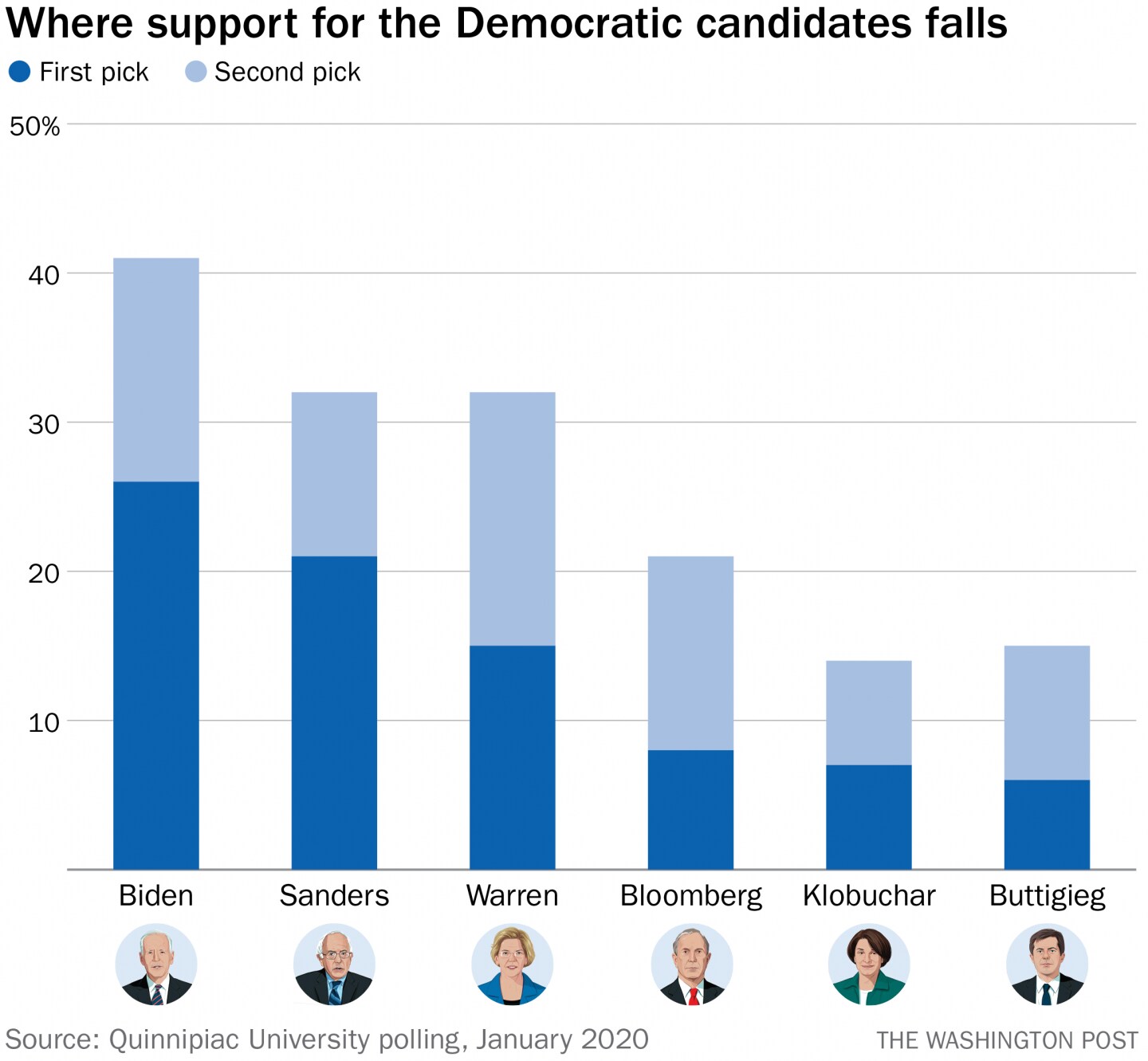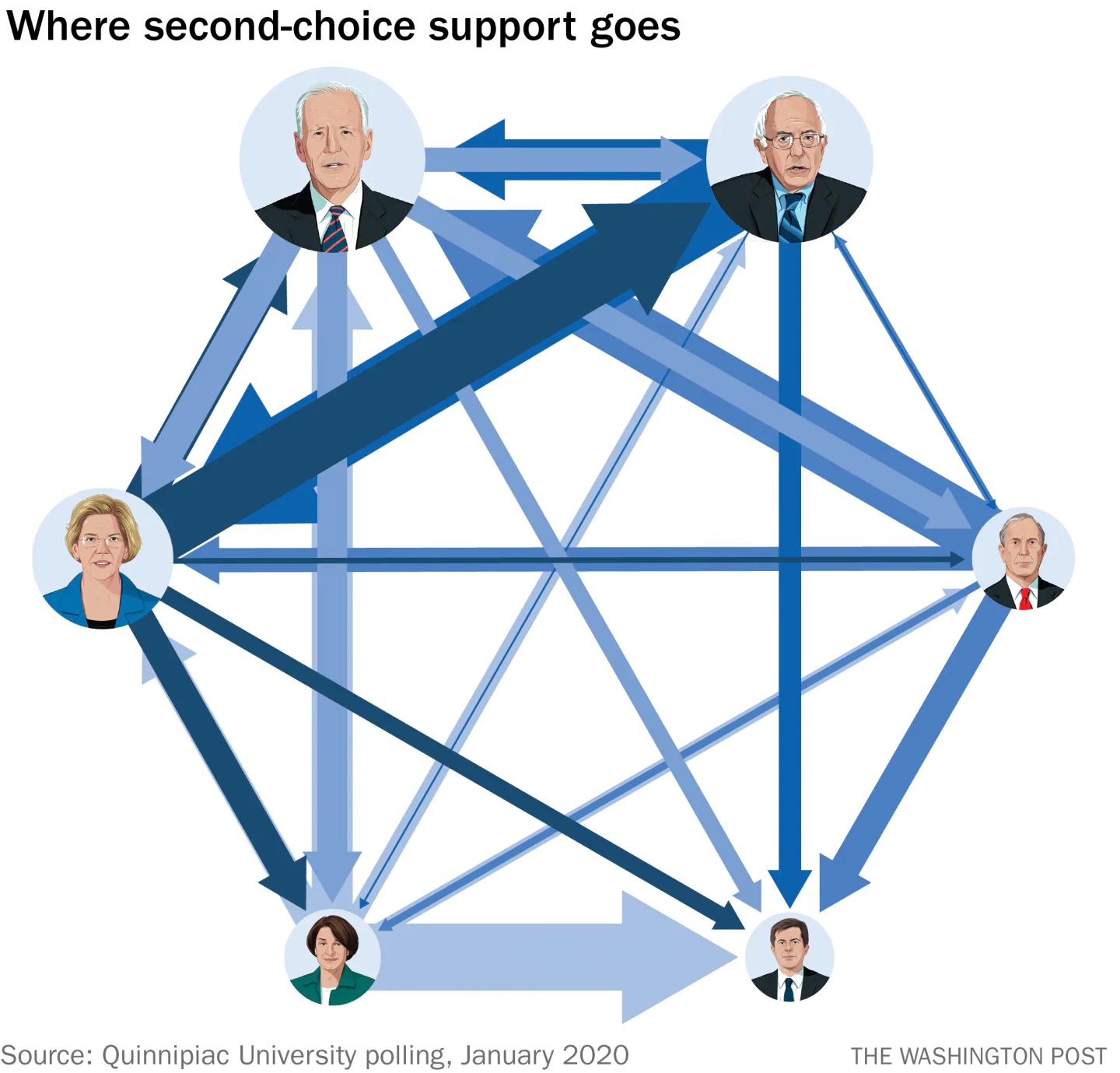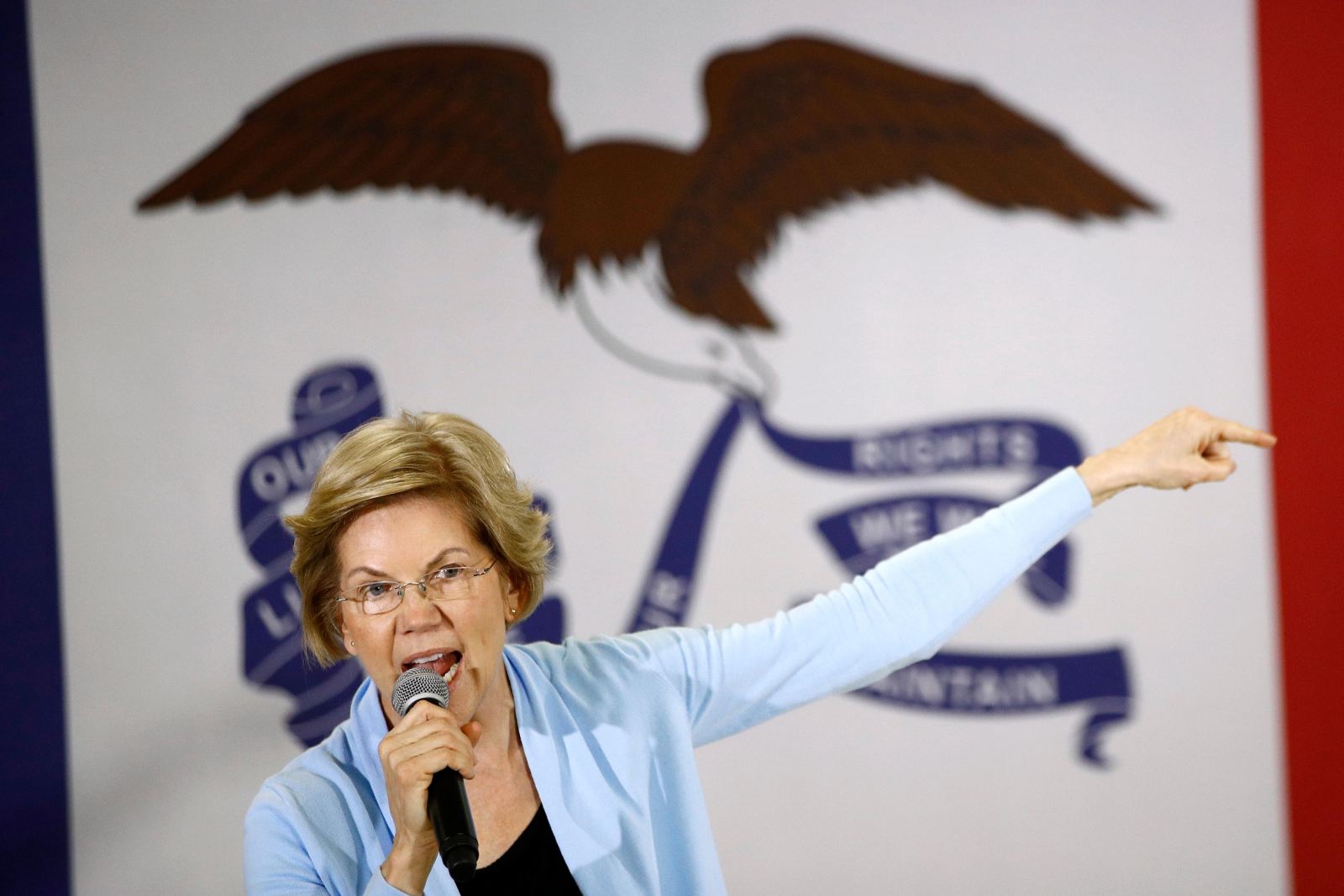We spend a lot of time examing polls to look at the horse race which reflects the “first choice” of voters. Less attention is paid to the question of “second choice” if a poll respondent’s first choice doesn’t end up winning a certain primary or drops out before that respondent gets to vote. This question is especially critical in Iowa where caucus procedures can force voters to switch to their second choice option in order to get a candidate over a 15 percent threshold of winning delegates.
According to an analysis by Philip Bump at the Washington Post, Sen. Elizabeth Warren seems to be winning the race for “second choice” right now, which means she’s still very much in the running despite flagging overall poll numbers as of late:
Then there’s a less common bit of data: whom voters see as their second choice. Why is this important? Specifically because we can expect some shuffling once voting begins, because of shifted expectations about who will win and because of candidates dropping out of the race. In Iowa, second choices are critical, since the state’s caucuses force some voters to choose another candidate before the caucus is over.
On Tuesday, we got new data from Quinnipiac University looking at this question on a national level. In Quinnipiac’s poll, former vice president Joe Biden is the top choice of Democratic primary voters, followed by Sens. Bernie Sanders (I-Vt.) and Elizabeth Warren (D-Mass.). But Warren is the top second choice of respondents. Combine first and second picks, and Warren matches Sanders in support.
In visual form, this is how the second choice support stacks up:

As you can see, Warren matches Sanders in total support when second choice voters are factored in. This doesn’t mean a whole lot on the surface, but it does become important in a very tight race where voters have yet to fully commit and make up their minds.
If Warren remains the top “second choice,” it could make her more viable in Iowa than polls would otherwise reflect. Her largest amount of second choice voters come from Sen. Bernie Sanders which means that most of them won’t end up moving her way on caucus night since Sanders shouldn’t have trouble getting over 15 percent in most precincts.
Here’s another graphic which, though slightly confusing, can make some sense if we break it down:

The darkest, most obvious lines run between Sanders and Warren, they share the most “second choice” voters between the two of them. This should be obvious since they’re both plotting out the progressive lane in the race.
Beyond the liberal duo, the lines become less pointed and more nuanced in where second choice support could be heading.
If, for example, Sen. Amy Klobuchar cannot meet a 15 percent threshold in several Iowa precincts, forcing her supporters to pick their second choice, most of her support goes to Pete Buttigieg, but some would head to a mix of the field, including a sizable number to Joe Biden, which would be natural. If Klobuchar, and other less-liberal candidates in her range of support, are the ones most likely to miss out of the 15 percent threshold on caucus night, it might not do much for Warren’s chances with making up lost ground by corraling second choice voters.
Support for each candidate still remains rather soft, though Sanders continues to pick up backers which seem to be peeling away from Elizabeth Warren. Sanders is leading in the two most recent Iowa polls, and his numbers are still on the incline. If he continues this trajectory, the second choice battle will end up being for the second and third place candidates to fight over since Sanders could be too far ahead for this metric to matter.
For Elizabeth Warren, though, the second choice voter could be crucial to her chances on caucus night and beyond.
Donate Now to Support Election Central
- Help defend independent journalism
- Directly support this website and our efforts
